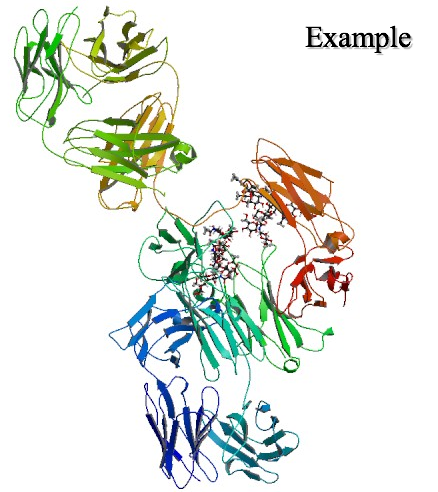Pembrolizumab
Other name
-
International/Other brands
Keytruda
Groups
Approved
Structure

Prescription products
| Name | Dosage | Strength | Route | Labeller |
|---|---|---|---|---|
| Keytruda | Powder, for solution | 50 mg | Intravenous | Merck Ltd. |
| Keytruda | Injection, powder, lyophilized, for solution | 50 mg/2mL | Intravenous | Merck Sharp & Dohme Limited |
| Keytruda | Injection, solution, concentrate | 25 mg/ml | Intravenous | Merck Sharp & Dohme Limited |
| Keytruda | Injection, solution | 25 mg/mL | Intravenous | Merck Sharp & Dohme Limited |
| Keytruda | Injection, powder, for solution | 50 mg | Intravenous | Merck Sharp & Dohme Limited |
| Keytruda | Solution | 25 mg | Intravenous | Merck Ltd. |
Target
-
Description
Pembrolizumab is a humanized monoclonal antibody that blocks the interaction between PD-1 and its ligands, PD-L1 and PD-L2. It is used for the treatment of several types of cancer such as, Melanoma, Non-Small Cell Lung Cancer and Head and Neck Cancer. Due to its success in clinical trials, pembrolizumab was approved early to allow quick patient access and was given breakthrough therapy and orphan drug designation. Pembrolizumab (as Keytruda) was approved by the U.S. Food and Drug Administration to treat advanced cases of the most common type of lung malignancy, non-small cell lung cancer on Oct. 2, 2015. Keytruda was additionally approved for the treatment of Classical Hodgkin Lymphoma (cHL) in March, 2017.
Indications
Metastatic Melanoma Unresectable Melanoma; Refractory, metastatic Non-small cell lung cancer
Other indications
-
Mechaism of action
-
Absorption
Steady-state concentrations of pembrolizumab were reached by 19 weeks of repeated dosing with an every 3-week regimen and the systemic accumulation was 2.2-fold. The peak concentration (Cmax), trough concentration (Cmin), and area under the plasma concentration versus time curve at steady state (AUCss) of pembrolizumab increased dose proportionally in the dose range of 2 to 10 mg/kg every 3 weeks.
Metabolism
Pembrolizumab undergoes catabolism to small peptides and single amnio acids via general protein degradation routes and does not rely on metabolism for clearance.
Toxicity
Since therapy with pembrolizumab induces tumour regression by stimulation of immune responses, side effects may be caused by activating potentially self-reactive T cells. This includes immune-mediated pneumonitis, colitis, hypophysitis, nephritis and renal failure, hyperthyroidism and hypothyroidism, and hepatitis. Other adverse events such as myasthenic syndrome, optic neuritis, uveitis, arthritis, pancreatitis, partial seizures, and rhabdomnyolysis were reported to occur in less than 1% of patients during clinical trials. Female patients are advised to use highly effective contraception during and for 4 months following treatment due to the risk of fetal harm.